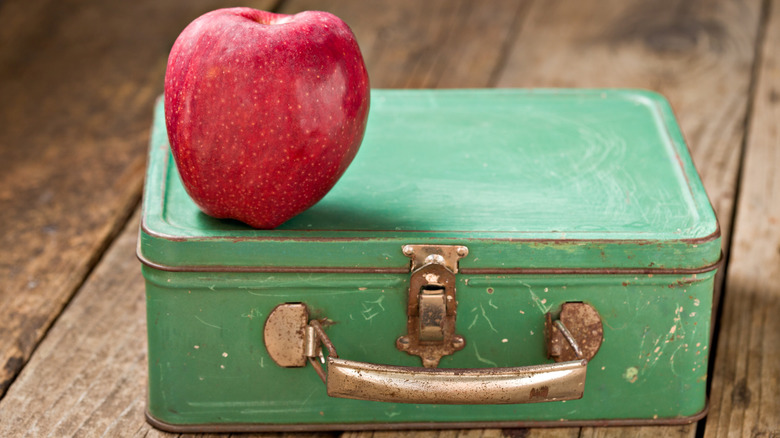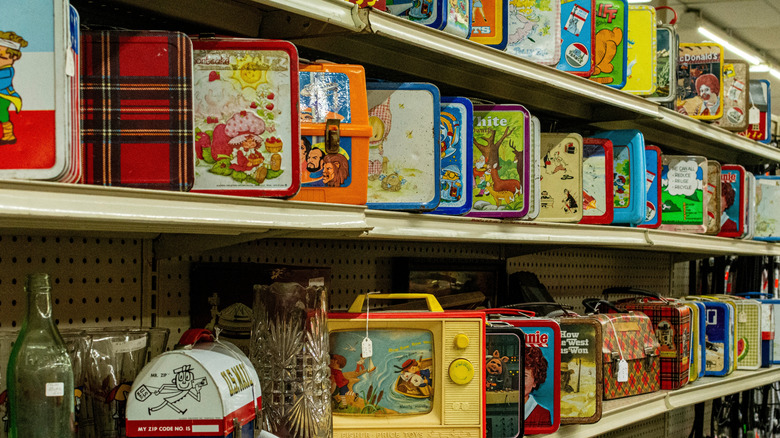Why Old School Lunch Boxes Were Once Made Of Metal
These days, if we're taking our food to-go, we're almost certainly packing it in some combination of plastic, or perhaps a soft-sided insulated lunch tote. But back in your grandma and great-grandma's day, things looked a little different: For much of the 19th and 20th century, no kitchen would have been without a metal lunch box or two — the common choice for working folks and school kids alike who needed to tote lunches with them.
We might not give much thought these days to what we store and schlep our food in — as long as it keeps our sandwiches and salads cold and fresh — but the old-school metal lunch box was born from a blend of economical considerations, availability, and durability, long before modern plastic, vinyl, or freezable containers were an option. The popularity and ubiquity of the humble metal lunch box primarily stemmed from a functional concern — the need to protect a worker's packed lunches from dirty or grueling conditions in the factory or at the mine. Metal containers kept food out of harms way and relatively insulated until it could be eaten, far better than earlier, more rudimentary storage options such as simple cloth or baskets. By the late 19th century, as more children began leaving home to go to school, lunches in tow, metal boxes and pails were their option de jour for the same basic reasons.
Function quickly turned to fashion as the lunch box craze took off
What began as purely utilitarian and functional would soon became fashionable, collectable, and marketable to the masses. Starting in the 1930s and continuing well into the '70s and '80s, marketers struck commercial gold with the idea to adorn plain metal lunch boxes with pop culture images — think every cartoon character, sports team, and movie character you can imagine — for school kids. Beatles fan, Star Wars nerd, Barbie lover, or Disney aficionado? There was a lunch box for that. It wasn't until the '80s that the metal lunch box craze began to die down in favor of the easier-to-pack soft-sided plastic shell or vinyl lunch bags that are common today.
While today's lunch box and food storage options are decidedly higher tech than the quaint metal pails and boxes of the past, there's still a way to harken back to a chapter of foodie history gone by, if the nostalgia of it all speaks to you. We say, bring back the metal lunch box, which are a dime a dozen on eBay or antique store shelves. Or, turn to functional, reusable, modern-day equivalents of the old-school metal lunch box. Pack your lunches in Mason jars or metal bento boxes — both zero-waste food storage options that keep food fresh while giving a subtle nod to practical, resourceful foodies who came before you.

